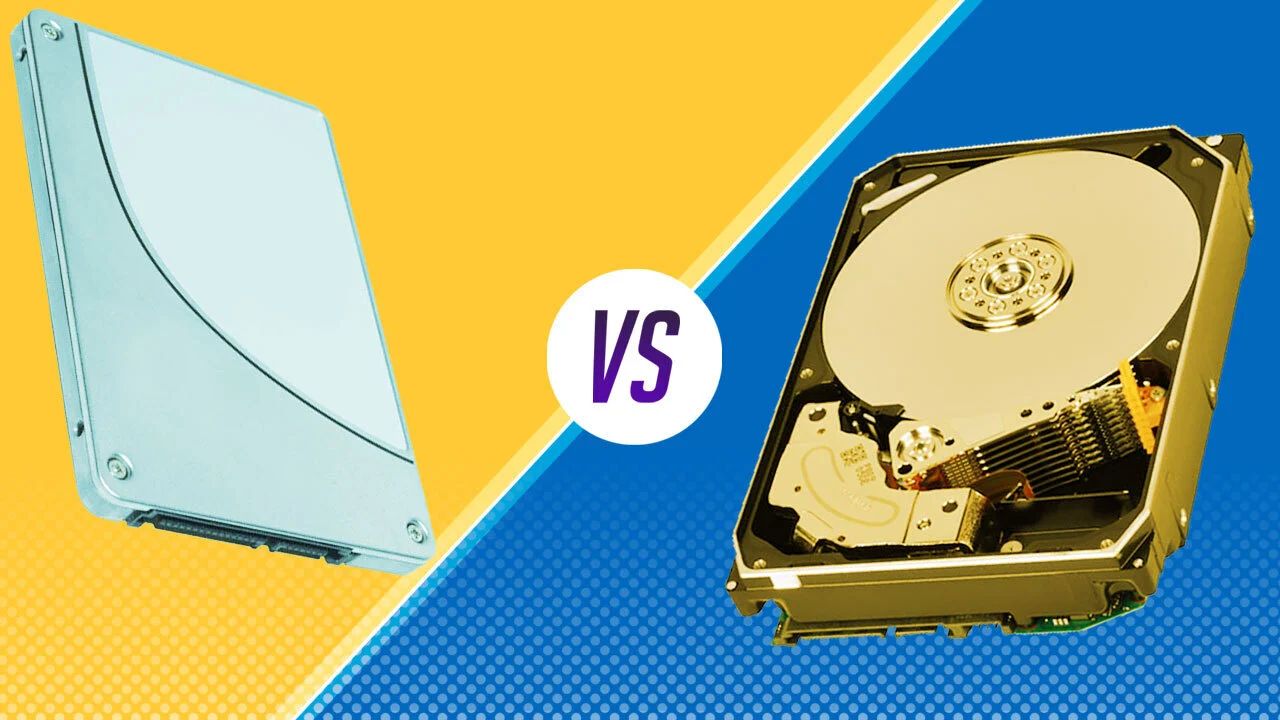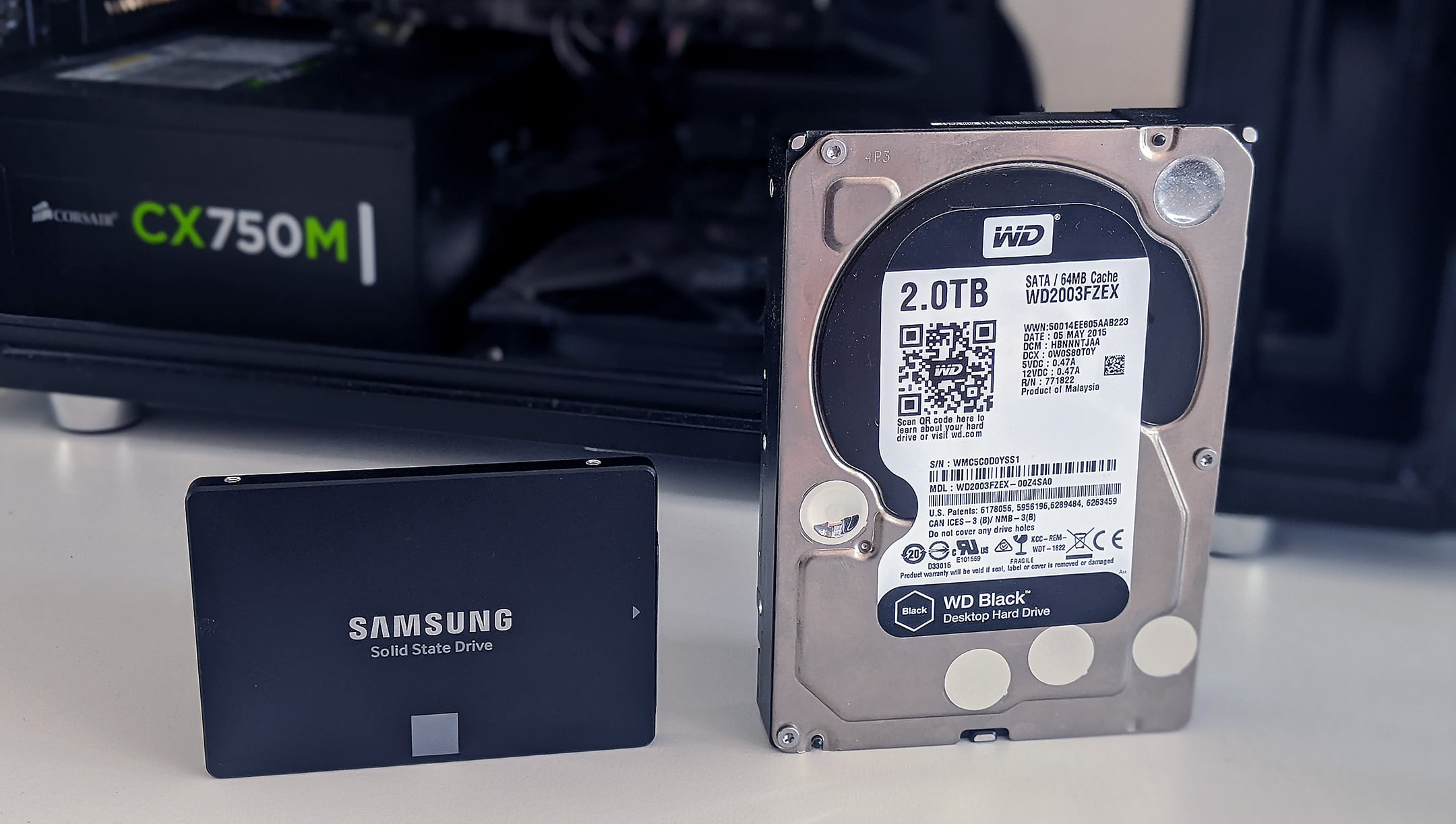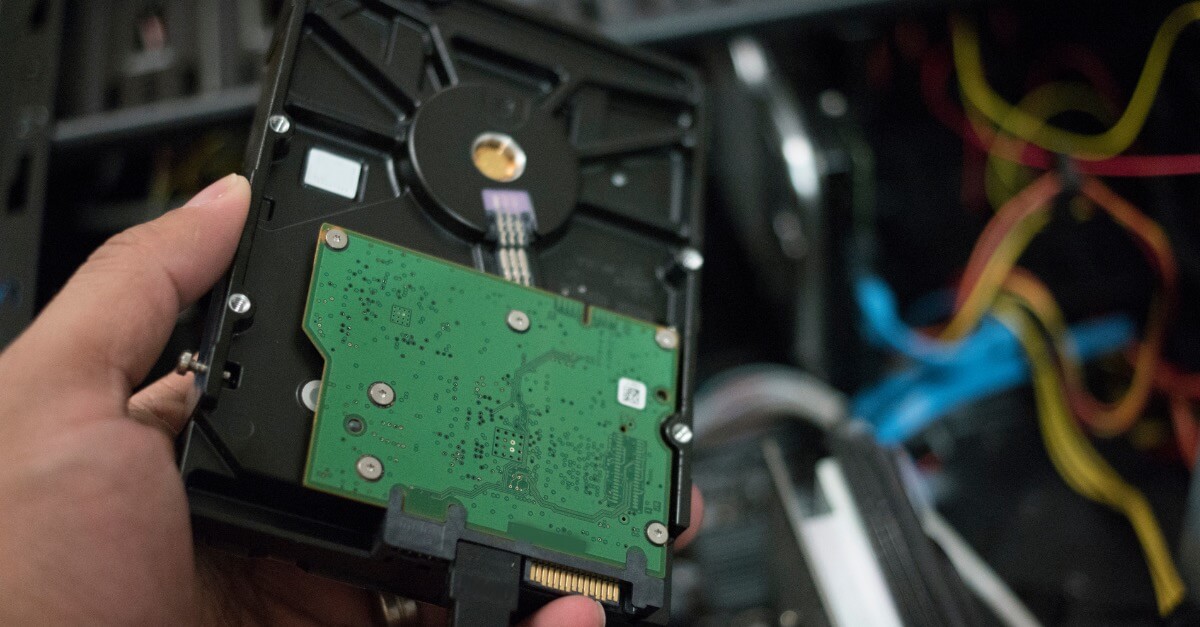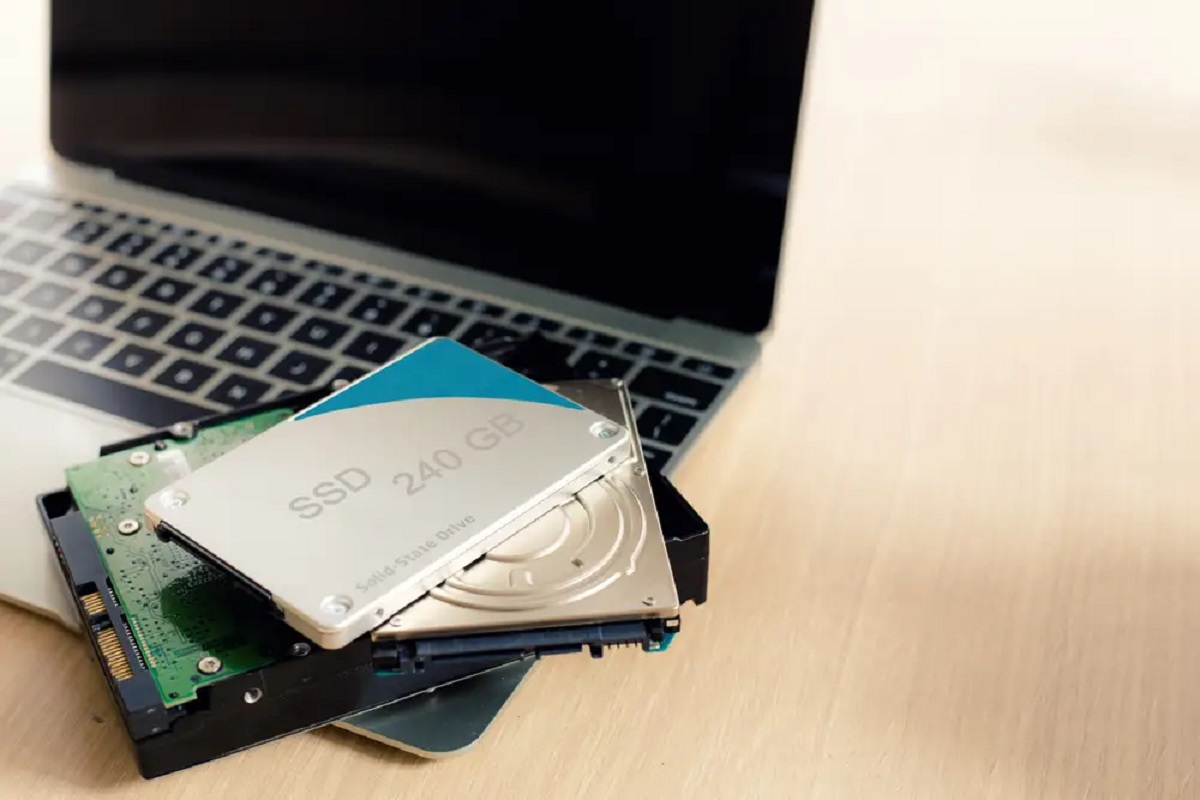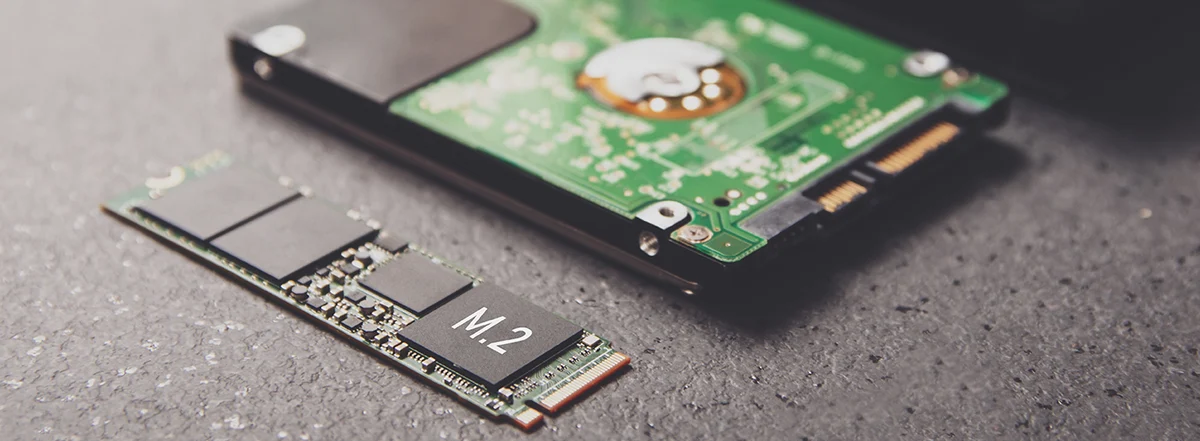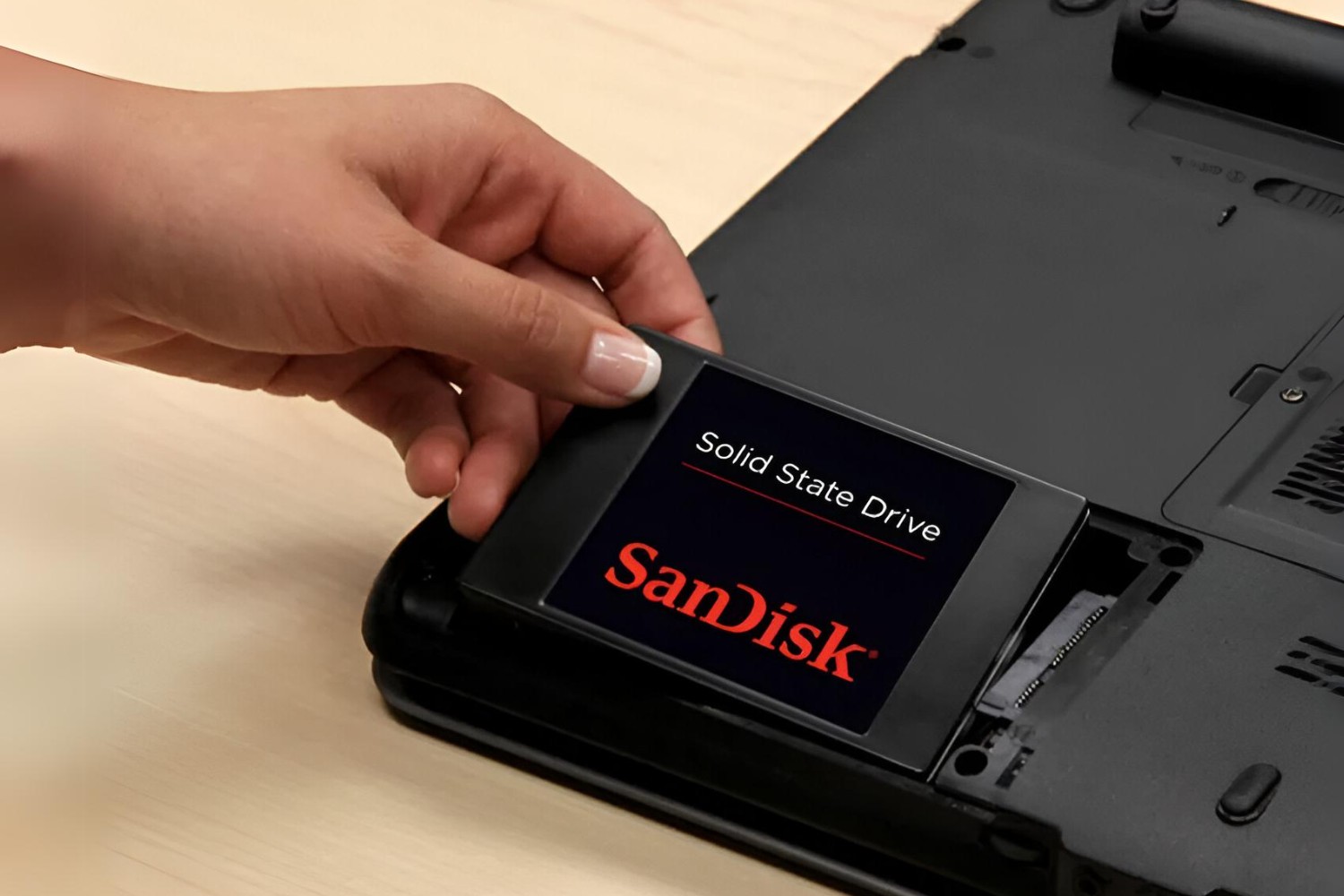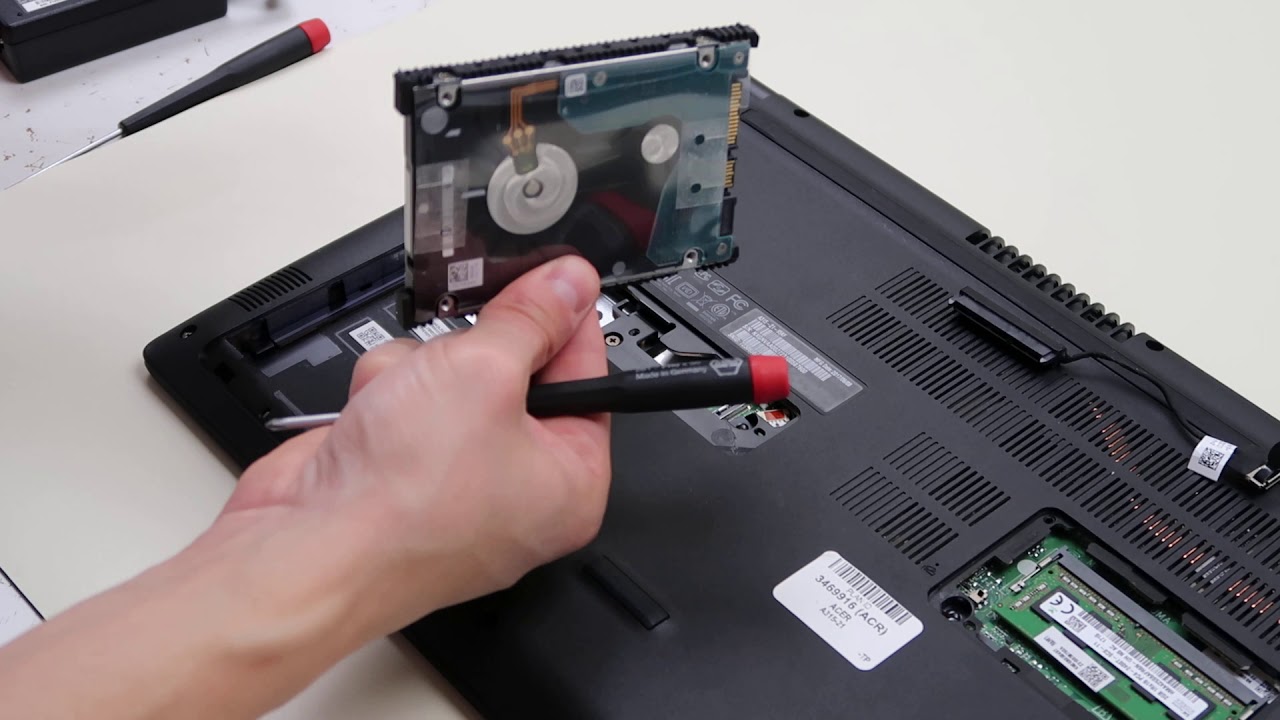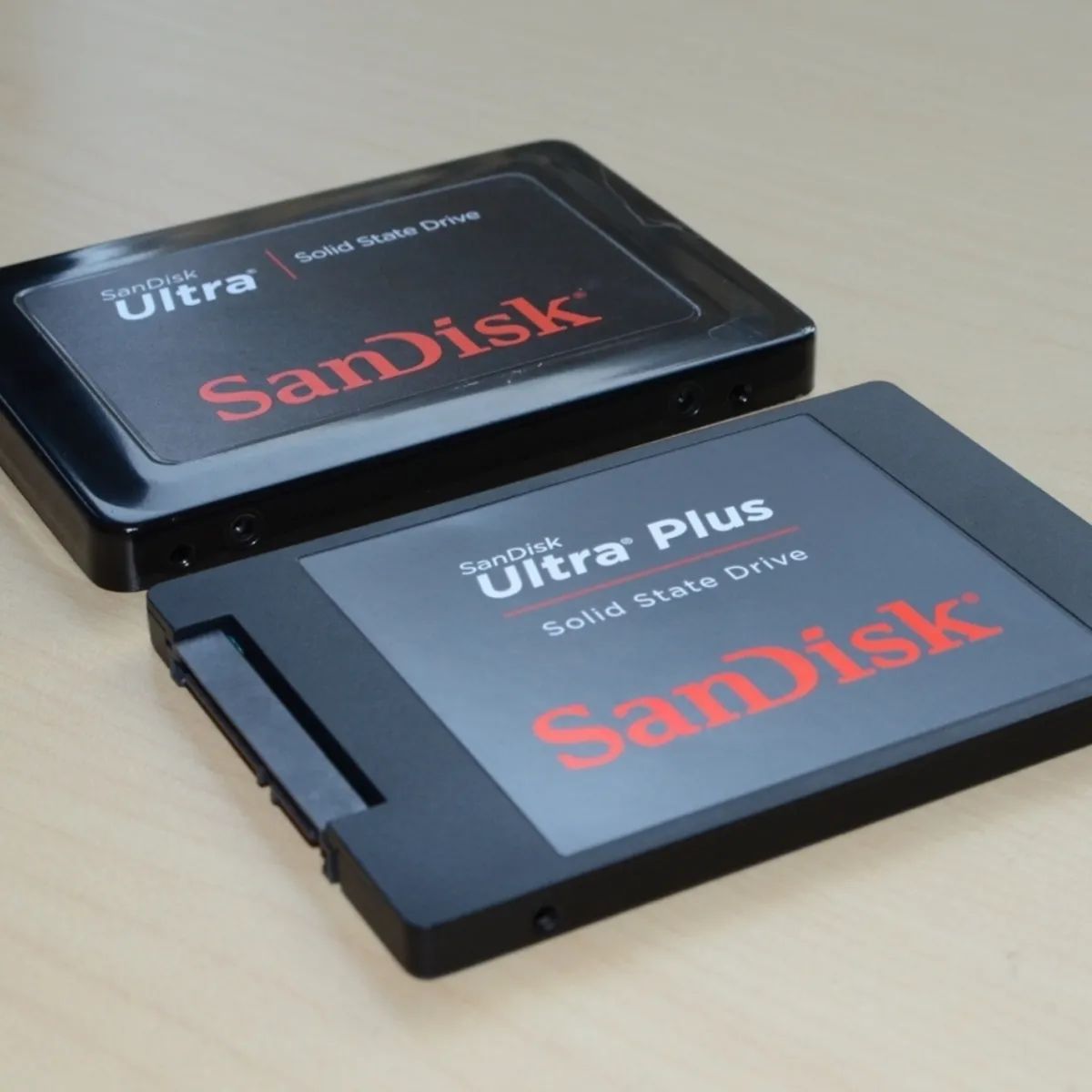Introduction
Welcome to the world of data storage! When it comes to choosing a storage solution for your computer or laptop, you are likely to come across two prominent options: hard disk drives (HDD) and solid state drives (SSD). Both of these technologies have their pros and cons, and it’s important to understand their differences in order to make an informed decision.
At a high level, HDDs and SSDs serve the same purpose – they store and retrieve data. However, the way they store and access data is quite different, which impacts various aspects such as speed, performance, capacity, reliability, and more. In this article, we will dive deep into the world of HDDs and SSDs to compare and contrast these two storage options, helping you understand which one is best suited for your needs.
Before we delve into the details, it’s important to understand the basic functioning of HDDs and SSDs. HDDs are mechanical devices consisting of spinning platters that store data magnetically, while SSDs are built with flash memory chips that store data electronically. This fundamental difference sets the stage for comparisons between the two.
Over the years, HDDs have been the traditional choice for many due to their long history in the market and comparatively lower cost per gigabyte. On the other hand, SSDs have gained popularity due to their faster performance, enhanced durability, and lower power consumption. Let’s explore these aspects and more in our journey of comparing HDDs and SSDs.
What is a Hard Disk Drive (HDD)?
A hard disk drive (HDD) is a traditional storage device that has been widely used for decades. It consists of one or more spinning magnetic disks, known as platters, and a read/write head that moves along the surface of these platters to access and store data. The platters are coated with a magnetic material that allows the read/write head to magnetically read and write data.
HDDs come in various sizes, typically ranging from 2.5 inches for laptops to 3.5 inches for desktop computers. They are available in different storage capacities, from a few hundred gigabytes to several terabytes, providing ample space for storing files, documents, software, and multimedia.
One of the key advantages of HDDs is their affordability and cost per gigabyte. Compared to solid state drives (SSDs), HDDs are generally more cost-effective for larger storage capacities. This makes them popular for users who require a lot of storage space, such as gamers, multimedia enthusiasts, and professionals dealing with large files.
In terms of performance, HDDs have certain limitations due to their mechanical nature. The read/write head needs to physically move to different locations on the spinning platters, resulting in a noticeable delay known as seek time. This seek time contributes to slower data access and transfer speeds compared to SSDs.
However, HDDs still offer decent performance for everyday use and tasks that do not require extensive data processing. They are capable of handling typical applications, web browsing, document editing, and multimedia playback without any issues. HDDs are also compatible with a wide range of devices, including laptops, desktops, gaming consoles, and external storage solutions.
Another characteristic of HDDs is their susceptibility to damage from physical shock or vibration. As the read/write head comes into direct contact with the spinning platters, any sudden movement can lead to data loss or drive failure. Therefore, it is important to handle HDDs with care, especially while they are in use or during transportation.
In terms of noise, HDDs produce audible sounds due to the spinning of the platters and movement of the read/write head. This noise level can vary depending on the specific model and manufacturer, but it is generally considered acceptable for most users.
In summary, hard disk drives (HDDs) are traditional storage devices that use mechanical components to store and retrieve data. They offer cost-effective storage solutions with larger capacities, but their performance can be slower compared to solid state drives (SSDs). HDDs are suitable for users who require ample storage space and perform everyday computing tasks without the need for extensive data processing.
What is a Solid State Drive (SSD)?
A solid-state drive (SSD) is a modern storage device that has gained popularity in recent years. Unlike traditional hard disk drives (HDDs), SSDs do not contain any moving parts. Instead, they use flash memory chips to store and retrieve data electronically. This difference in technology gives SSDs several advantages over HDDs.
SSDs are available in various form factors, including the smaller 2.5-inch size for laptops and the larger M.2 or PCIe cards for desktops. They offer a range of storage capacities, from smaller options suitable for operating systems and applications to larger capacities suitable for storing media files and other data.
One of the standout features of SSDs is their exceptional speed and performance. Since there are no moving parts involved, data access and transfer speeds are significantly faster compared to HDDs. This results in quicker boot times, faster application loading, and improved overall system responsiveness. Tasks like file transfers, software installations, and large data transfers can be completed in a fraction of the time.
Another advantage of SSDs is their reliability and durability. Without the mechanical components found in HDDs, SSDs are less susceptible to physical damage from shock, vibration, or accidental drops. This makes them a more resilient option for portable devices like laptops. Additionally, SSDs have a longer lifespan compared to HDDs, as they are not subject to wear and tear caused by moving parts.
In terms of power consumption, SSDs are more energy-efficient than HDDs. The absence of spinning platters and moving read/write heads means that SSDs consume less power during operation. This results in longer battery life for laptops and reduces the overall power consumption of desktop systems, making SSDs a greener storage option.
When it comes to noise, SSDs are virtually silent. Without any moving parts, there is no audible noise generated during normal operation. This is especially beneficial in environments where noise reduction is important, such as recording studios or quiet office spaces.
It is worth noting that, compared to HDDs, SSDs are typically more expensive on a per-gigabyte basis. However, the price of SSDs has been decreasing steadily over time, making them more affordable and accessible to a wider range of users. The higher cost is often justified by the improved performance, reliability, and energy efficiency that SSDs offer.
In summary, solid-state drives (SSDs) are modern storage devices that use flash memory chips to store and retrieve data. They provide exceptional speed, reliability, durability, energy efficiency, and near-silent operation. Although SSDs are initially more expensive than HDDs, their performance benefits make them an attractive choice for users who prioritize speed and reliability in their storage solution.
Speed and Performance Comparison
When it comes to speed and performance, solid state drives (SSDs) have a significant advantage over hard disk drives (HDDs). The absence of moving parts in SSDs allows for faster data access and transfer speeds.
SSDs offer remarkable read and write speeds, which result in quicker boot times, faster application launching, and snappy overall system responsiveness. Opening large files, loading heavy software, and performing data-intensive tasks are noticeably faster with SSDs.
On the other hand, HDDs have mechanical components that involve physical movement, such as the spinning platters and the read/write head. This mechanical nature of HDDs leads to slower data access and transfer speeds compared to SSDs. HDDs typically have slower random access times, which can result in longer waiting periods for data retrieval.
In terms of sequential read and write speeds, SSDs are far superior. They can achieve speeds of hundreds of megabytes per second or even exceed gigabytes per second, depending on the specific model. This allows for seamless playback of high-quality video files, smoother gaming experiences, and faster file transfers.
HDDs, on the other hand, have sequential read and write speeds that are significantly lower compared to SSDs. They are generally limited to speeds in the range of tens to hundreds of megabytes per second. While this may be sufficient for regular day-to-day tasks, it can be a limiting factor for more demanding applications or multitasking scenarios.
The superior speed and performance of SSDs make them an ideal choice for users who require fast and efficient storage. This includes professionals who work with large files, content creators, gamers, and anyone who values speedy performance in their computing experience.
However, it’s important to note that the actual speed and performance of SSDs and HDDs can vary based on several factors, including the specific model, interface technology (such as SATA or NVMe), and the overall system configuration. It’s advisable to consider these factors when selecting the storage solution that best suits your needs.
In summary, SSDs outperform HDDs in terms of speed and performance. The absence of moving parts in SSDs allows for faster data access and transfer speeds, resulting in quicker boot times, faster application launching, and better overall system responsiveness. However, it’s crucial to consider other factors such as model, interface technology, and system configuration to accurately assess the speed and performance of an SSD or HDD.
Capacity Comparison
When it comes to storage capacity, hard disk drives (HDDs) have the upper hand over solid state drives (SSDs). HDDs are available in larger capacities, making them a suitable choice for users who require ample storage space.
HDDs can be found in capacities ranging from a few hundred gigabytes to several terabytes. This allows users to store a vast amount of data, including software, multimedia files, documents, and more. HDDs are especially popular among gamers, multimedia enthusiasts, and professionals who deal with large files on a regular basis.
In contrast, SSDs generally offer smaller storage capacities compared to HDDs. While SSDs with capacities over terabytes are available, they are typically more expensive and less common. SSDs are commonly found in smaller capacities, starting from tens of gigabytes and going up to a few terabytes.
However, it is important to consider that SSDs are available in different form factors, such as the standard 2.5-inch size for laptops and the M.2 or PCIe cards for desktops. This allows for flexibility in choosing the right capacity to fit specific device requirements.
Additionally, it is worth noting that SSDs often prioritize performance over capacity. This means that SSDs with smaller capacities may offer faster speeds and better overall performance compared to their higher-capacity counterparts.
While HDDs excel in offering larger storage capacities, SSDs make up for it with improved speed, reliability, and energy efficiency. If you require a massive amount of storage space for your files, an HDD may be the better choice. However, if you prioritize performance and have a smaller storage requirement, an SSD can provide faster data access and transfer speeds.
It’s important to carefully evaluate your storage needs and prioritize whether capacity or performance is more important for your specific use case. Some users may opt for a combination of both by using an SSD for the operating system and applications to benefit from speed, and pairing it with an HDD for bulk storage of files that are less frequently accessed.
In summary, HDDs offer larger storage capacities compared to SSDs. HDDs are suitable for users who require a significant amount of storage space, such as gamers, multimedia enthusiasts, and professionals dealing with large files. SSDs, on the other hand, may have smaller capacities but prioritize speed, reliability, and energy efficiency.
Reliability and Durability Comparison
When it comes to reliability and durability, solid-state drives (SSDs) have a clear advantage over hard disk drives (HDDs). The absence of moving parts in SSDs contributes to their superior reliability and durability compared to the mechanical components found in HDDs.
One of the main factors that make SSDs more reliable is their lack of moving parts. HDDs consist of spinning platters and a read/write head that moves along these platters to access and store data. This mechanical nature makes HDDs more prone to failure due to wear and tear over time. Additionally, the read/write head coming into direct contact with the platters means that even a slight physical shock or vibration can result in data loss or drive failure.
SSDs, on the other hand, use flash memory chips to store and retrieve data. With no moving parts involved, SSDs are not subject to the same wear and tear as HDDs. This significantly reduces the risk of mechanical failures and extends the overall lifespan of the drive.
In terms of durability, SSDs are more resistant to physical damage caused by shock, vibration, or accidental drops. Their solid-state design allows them to withstand harsher conditions compared to HDDs. This makes SSDs a more reliable storage solution for users who require a portable device, such as a laptop, that may be subjected to movement and potential accidents.
It’s important to note that despite their inherent reliability and durability, SSDs are not immune to failure. Like any electronic device, they come with a limited lifespan and can still experience issues. However, the failure rates for SSDs are generally lower compared to HDDs due to their solid-state construction.
HDDs, while more prone to mechanical failures, still have a reasonably reliable track record. Many HDDs offer features such as shock sensors and error detection and correction algorithms to mitigate potential issues and maximize reliability. However, the mechanical components of HDDs remain a potential point of failure.
In summary, SSDs offer enhanced reliability and durability compared to HDDs due to their solid-state construction and lack of moving parts. The absence of mechanical components in SSDs reduces the risk of mechanical failures and makes them more resistant to physical damage caused by shock or vibration. While HDDs have their own reliability features, their mechanical nature leaves them more susceptible to potential failures.
Power Consumption Comparison
When it comes to power consumption, solid-state drives (SSDs) have a significant advantage over hard disk drives (HDDs). SSDs are more energy-efficient, resulting in lower power consumption during operation.
The power consumption of an HDD is higher due to its mechanical nature. The spinning platters and moving read/write head require continuous power to operate. This results in higher power draw, which can impact overall system energy efficiency and battery life in portable devices.
In contrast, SSDs use flash memory chips to store and retrieve data electronically. Without any moving parts, the power consumption of SSDs is significantly lower compared to HDDs. This energy efficiency is particularly beneficial in laptops and other portable devices where battery life is crucial.
With lower power consumption, SSDs can contribute to longer battery life in laptops. This allows users to work, browse the web, or stream multimedia content for extended periods without needing to connect to a power source. Additionally, the reduced power draw from SSDs makes them a greener storage solution, as they contribute to lower overall energy consumption and environmental impact.
It is important to note that power consumption varies depending on the specific model and usage patterns. While SSDs generally consume less power during operation, they can still consume a significant amount of power during data-intensive tasks or high-performance scenarios. Additionally, idle power consumption can vary among different SSD models, with some offering more power-saving features than others.
HDDs, while consuming more power compared to SSDs, have been optimized over the years to improve energy efficiency. Some HDD models offer low-power modes, such as idle or standby modes, to reduce power consumption when not actively accessing or transferring data. However, these modes may not lead to power savings as significant as those achieved by SSDs.
Overall, the lower power consumption of SSDs makes them an attractive choice for users who prioritize energy efficiency and longer battery life. The reduced power draw not only benefits portable devices, but it also contributes to a more sustainable and environmentally friendly computing experience.
In summary, SSDs have lower power consumption compared to HDDs due to their solid-state nature and absence of moving parts. The energy efficiency of SSDs results in longer battery life in laptops and reduces overall power consumption, making them a greener storage option. While HDDs have also improved in terms of energy efficiency, SSDs offer a significant advantage in power consumption.
Noise and Vibration Comparison
When it comes to noise and vibration, solid-state drives (SSDs) have a clear advantage over hard disk drives (HDDs). HDDs, due to their mechanical components, can generate noticeable noise and vibration during operation.
Since HDDs consist of spinning platters and a moving read/write head, there is a constant humming or spinning noise produced as the platters rotate. The read/write head movement can also contribute to a clicking or ticking sound. These sounds can be noticeable, especially in quiet environments or when the HDD is under heavy use.
In addition to noise, HDDs can also generate vibrations due to the spinning platters and the movement of the read/write head. These vibrations can be felt if the HDD is directly connected to the computer case or mounted in a way that allows for transmission of vibrations. While these vibrations may not be severe, they can contribute to a less pleasant overall user experience.
SSDs, on the other hand, are virtually silent during operation. Since SSDs do not have any moving parts, there is no mechanical noise or vibrations generated. This makes SSDs an excellent choice for users who value a quiet computing environment, such as those working in recording studios or in noise-sensitive areas.
The absence of noise and vibrations from SSDs also contributes to a more enjoyable user experience. This is particularly important for those who use their computers for activities such as media creation, video editing, or immersive gaming, where a noise-free environment enhances focus and concentration.
It is worth noting that while the noise and vibration levels of HDDs can vary depending on the specific model and manufacturer, SSDs consistently provide a near-silent operation. Even under heavy use, SSDs maintain their noise-free performance.
In summary, SSDs have a significant advantage over HDDs when it comes to noise and vibration levels. HDDs, due to their mechanical components, can generate noticeable noise and vibrations during operation, while SSDs remain virtually silent. This noise-free operation of SSDs makes them ideal for users who value a quiet computing environment and seek a more enjoyable overall user experience.
Price Comparison
When it comes to price, hard disk drives (HDDs) have a clear advantage over solid-state drives (SSDs). HDDs offer a more cost-effective storage solution, especially when it comes to larger storage capacities.
One of the main factors that make HDDs more affordable is their long history in the market. HDD technology has been around for decades, allowing manufacturers to refine the manufacturing processes and achieve economies of scale. This results in lower production costs, making HDDs more budget-friendly for users who require a large amount of storage space.
In terms of price per gigabyte, HDDs have a significant advantage over SSDs, particularly for higher capacities. HDDs can provide several terabytes of storage at a relatively low cost. This makes them a popular choice for users who need to store large collections of media files, such as movies, music, and photos, as well as databases and other data-heavy applications.
While SSD prices have been decreasing over time, they are still more expensive than HDDs on a per-gigabyte basis, especially for larger capacities. The higher cost of SSDs can be attributed to the advanced flash memory technology they use, which is more expensive to produce compared to the magnetic storage of HDDs.
However, it’s important to consider that the price difference between SSDs and HDDs has been narrowing over the years. As SSD technology continues to advance and become more mainstream, the price per gigabyte continues to decline. This has made SSDs more accessible and affordable for a wider range of users.
Additionally, it’s important to consider the value proposition that SSDs offer beyond just price per gigabyte. SSDs provide superior speed, performance, reliability, and energy efficiency compared to HDDs. These factors may justify the higher cost for users who prioritize these benefits.
In summary, HDDs offer a more cost-effective storage solution, especially for users who require larger storage capacities. HDDs have a lower price per gigabyte compared to SSDs, making them a popular choice for budget-conscious users needing ample storage space. While SSDs are generally more expensive, they provide superior speed, performance, reliability, and energy efficiency, which may justify the higher cost for users who prioritize these features.
Conclusion
Choosing between a hard disk drive (HDD) and a solid-state drive (SSD) ultimately depends on your specific needs and priorities. Both storage options have their advantages and considerations, and understanding the differences can help you make an informed decision.
HDDs are the traditional choice for storage due to their larger storage capacities and cost-effectiveness. They are suitable for users who require ample storage space for large files, multimedia collections, and data-intensive applications. While HDDs may have slower access speeds and be more prone to mechanical failures, they still provide reliable storage for everyday computing tasks.
On the other hand, SSDs offer significant benefits in terms of speed, performance, reliability, durability, and energy efficiency. The absence of moving parts in SSDs allows for faster data access, better overall system responsiveness, and lower power consumption. SSDs are ideal for users who prioritize speed, performance, and a noise-free computing experience.
It’s worth noting that SSDs still come at a higher price per gigabyte compared to HDDs, especially for larger capacities. However, the price difference has been narrowing, and the performance benefits provided by SSDs may justify the higher cost for users who require faster and more efficient storage solutions.
Ultimately, the choice between an HDD and an SSD depends on factors such as budget, storage requirements, performance needs, and personal preferences. Some users opt for a combination of both, using an SSD for the operating system and frequently used applications to benefit from faster speeds, while utilizing an HDD for mass storage of less frequently accessed files.
As technology continues to evolve, SSDs are becoming more prevalent and affordable, making them a mainstream choice for many users. The continued advancements in solid-state technology promise even faster speeds, larger capacities, and more cost-effective storage solutions in the future.
In conclusion, when deciding between an HDD and an SSD, consider your specific needs for storage capacity, speed, performance, reliability, durability, power consumption, and budget. Understanding the differences between these storage options will help you choose the one that best suits your requirements and enhances your computing experience.







